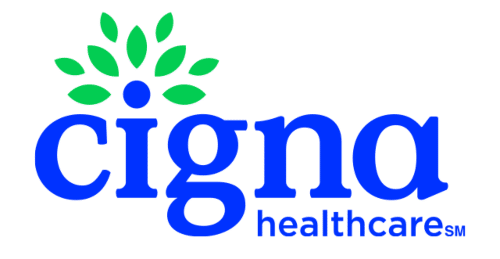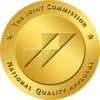Two thousand seventeen statistics by the National Survey on Drug Use and Health (NSDUH) show that at least 17 million Americans battled with drug addiction during this year.
The American economy loses at least 740 billion dollars every year due to drug addiction. Factors such as decelerated workplace productivity, Opioid-related deaths, medical expenses on substance use disorders, and drug-related crimes cripple the economy significantly. Therefore, understanding drug addiction, how it works, and different stages of addiction could help begin a recovery journey.
Having profound knowledge to identify different addictions and the different programs is essential before enrolling a loved one into a treatment program at Safe & Sound, such as medically assisted detox or partial hospitalization programs.
What is Drug Addiction
It refers to the compulsive drug-seeking urge to continue using the harmful substance despite its adverse consequences. Others consider it a recurrent, relapsing disorder which is both a mental illness and brain disorder.
On the other hand, drug relapse refers to the uncontrollable return to drug abuse despite previous attempts to stop using. Scientists consider drug addiction a relapsing disease that affects the victim’s ability to choose. While it begins as a voluntary act, when a person gets addicted, alcohol and drug abuse become compulsive.
Brain damage to the brain area that controls behavior (involved in reward and motivation by drugs) remains the primary cause of addiction and relapse.
Addiction vs. Dependence
While most people often use the two terms interchangeably, a difference in their meanings exists. When mentioning addiction, the American Society of Addiction Medicine (ASAM) refers to a chronic disease characterized by harmful behaviors caused by substance abuse.
In general, addiction encompasses the drug-related behavioral habits linked to biochemical changes that damage the brain memory reward and motivation functions.
General signs of substance abuse include:
- Inability to control the urge to abuse drugs
- Isolation characterized by individuals ignoring commitments and relationships
- Tendency to ignore risky behaviors such as sharing needles
On the contrary, drug dependence refers to physical reliance on drugs. While it is possible to exhibit physical dependence without addiction, the contrary remains impossible.
When a person becomes drug dependent, they display symptoms of withdrawal and tolerance, unlike addicted people who act irritably in the absence of the substance they remain addicted to in their body system.
The main factor that distinguishes addiction from dependence is the uncontrollable behavior to obtain and use substances.
Top 10 Most Addictive Substances
While determining addiction levels of different substances, researchers often classify dependence into psychological and physical categories besides considering the intensity of pleasure from such drugs.
Most people begin abusing highly pleasurable drugs due to the euphoric effects they can give. Addictive substances that lead to physiological dependence instigate a repeated drug use tendency without considering the negative consequences on one’s health.
Most addictive substances in the U.S. include the following:
- Heroin
- Cocaine
- Tobacco
- Street methadone
- Barbiturates
- Alcohol
- Benzodiazepines
- Amphetamine
- Buprenorphine
- Cannabis.
The 7 Stages of Addiction You Need to Know
The path to addiction begins with one voluntary act of taking any of the above substances. Addiction then takes over one’s ability to choose over time.
The urge to abuse drugs then becomes compulsive, and addicts begin to display irritable behaviors when they cannot access addictive substances.
Over time, the repeated process to abuse substances gradually changes in a linear progression which remains similar in all addicts.
However, the period for every stage differs from one person to another. It depends on underlying factors such as type of drug, dosage, and frequency of substance abuse.
It remains possible to break down the various addiction stages since they follow a distinctive pattern. Despite different debates on the number of addiction stages, the following seven stages remain common:
Stage 1: Initiation
During this stage, a person tries substances for the first time. People try to experiment with drugs at this stage due to reasons such as peer pressure among teenagers. Most people try new drugs before they are 18 years of age.
People often experiment with drugs because of the following:
- Peer pressure
- Drug availability
- Existing mental health conditions such as stress, anxiety, and depression
However, it is not always a guarantee that a person will become addicted after experimenting with drugs.
Stage 2: Experimentation
An individual will still be deciding consciously at this stage. However, the need to use substances may also be compulsive and more frequent during the first stage, depending on ones’ reason for using them. Fortunately, a person can easily withdraw from the drug because they have not yet developed a dependency.
Stage 3: Regular Use
With continued experimentation, a user develops a regular pattern to use a substance. The pattern may vary depending on emotional factors such as loneliness and stress.
Unfortunately, problematic drug-use behaviors that affect one’s life may begin at this stage. Additionally, the drug user may begin to develop substance reliance.
Stage 4: Risky Use
Effects of drug use become visible at stage 4. A user’s regular use begins to grow, with the negative impact of the substance becoming adverse. Other people will start to notice the loved one’s shift in behavior.
Watch out for signs of addiction, such as:
- Hiding drug use
- Running into financial trouble
- Neglecting personal responsibilities
Stage 5: Dependence
At this stage, a user has abused the substance long enough that different body functions rely on it. The body may enter a withdrawal state if a person chooses to stop using the substance. Withdrawal at this stage may be characterized by dangerous symptoms that require professional intervention, such as Cognitive Behavioral Therapy.
Stage 6: Addiction
The addiction stage is characterized by long-lasting brain damage that instigates dangerous behaviors exhibited by alcohol and drug addicts.
Users at this stage cannot live without substances. Unfortunately, even with the proper treatment, individuals remain at risk of relapse is prevalent.
Stage 7: Crisis/Treatment
This stage is the breaking point when a user loses touch with their old life and becomes a threat to themselves and those around them. A person can easily suffer a fatal overdose at this point.
When it comes to drug treatment, we offer you comprehensive treatment options customized to meet individual needs.
Our addiction treatment programs include:
- Outpatient treatment
- Inpatient treatment
- Alcohol detox
- Opiate detox
- Cocaine rehab
- Meth rehab
- Benzo rehab
- And more
If an addictive substance controls you or your loved one, break free by signing up with our many addiction recovery treatments.
Our specialists customize a treatment plan for you at the Safe & Sound Treatment’s Rehab and detox center in Costa Mesa.
Contact us today for help to a future free of substance abuse regardless of the stage of substance abuse you are in today!


















